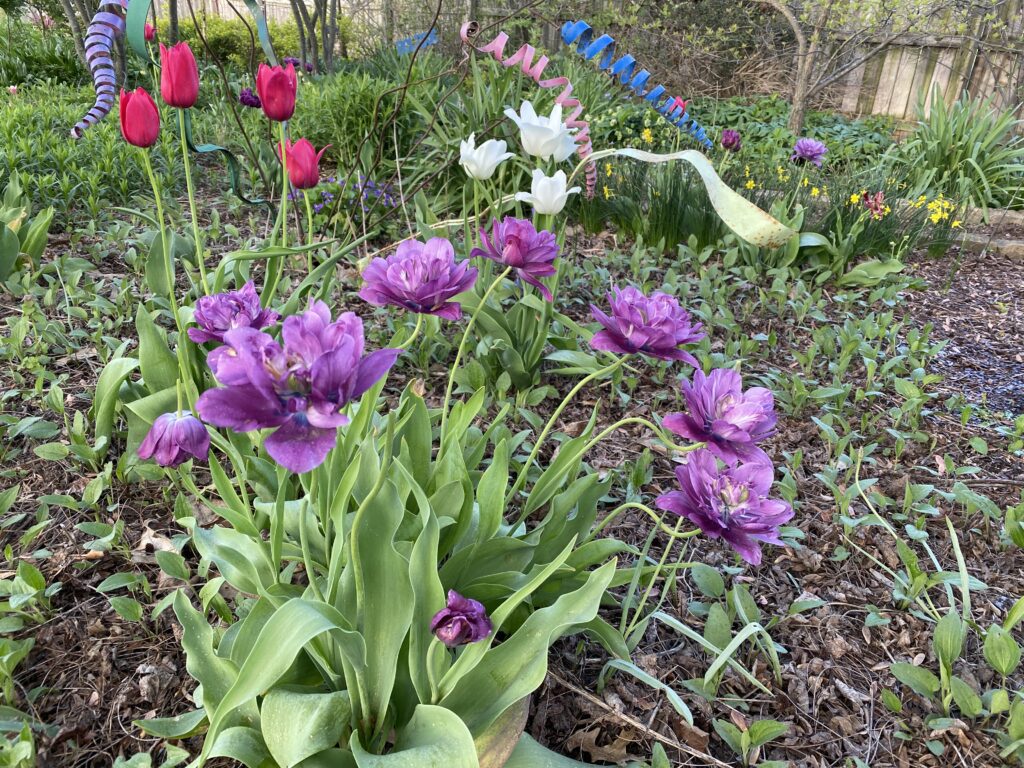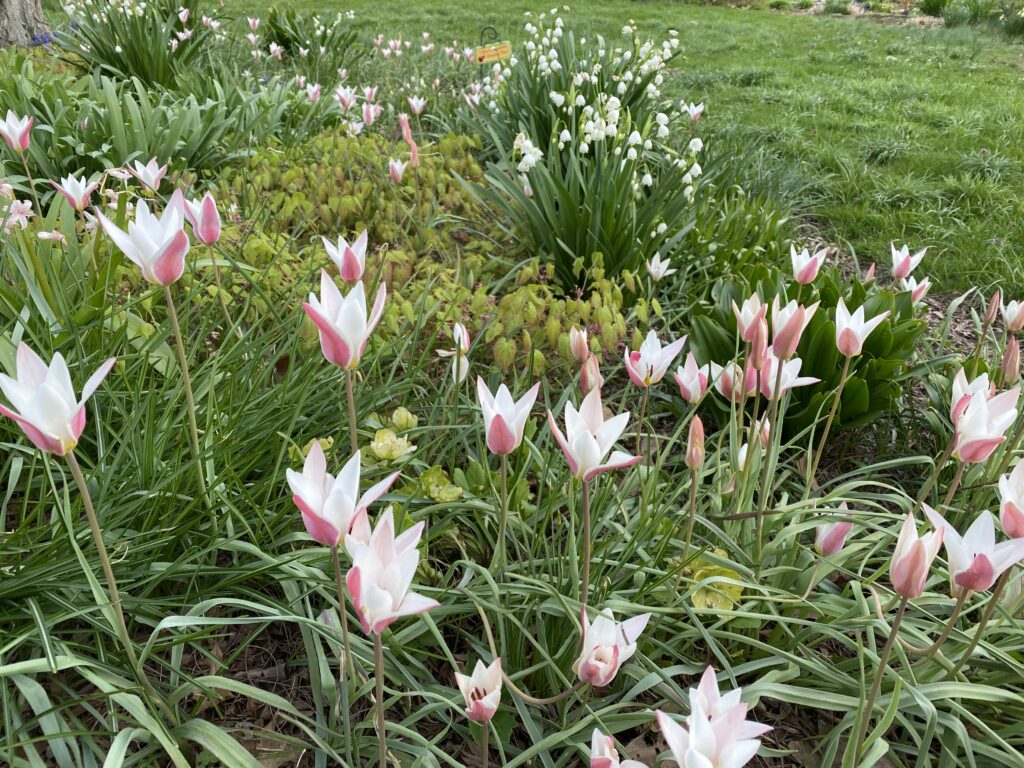
A few years ago, my neighbor asked me why all my tulips come back and bloom every year, while his tulips seem to bloom once, and then the next year, he gets a bunch of leaves and no blooms.
It’s a common question and complaint about tulips. Why don’t they bloom a second year?
Oh, but they do bloom a second year! At least some of them do. The proof is in my garden where I have many tulips that continue to grow and even multiply and bloom faithfully every year.
Is it me or the tulips that make a difference?
A little of both?
I buy tulips that are known for returning reliably every year. For example, the double-flowering tulips pictured above have been growing nicely in that spot for several years. Did I plant multiple bulbs there? I did not. I planted one bulb, and it has done all the work of multiplying itself. That kind of tulip does that.
I also buy lots of species tulips, which are usually smaller, but in large groupings they can make a big impact, like these ‘Lady Jane’ tulips. They’ve been increasing in numbers for several years.

I also deadhead my tulips. I’m not zealous about it, but when I think of it, I cut off the bloom stalks. Then, instead of spending its energy on producing seed, the tulip diverts it to form a bulb for next year. And of course, I leave the foliage until it turns yellow, and no, I don’t worry about how that looks in the garden. It’s a short-term problem.
I think another trick for returning tulips is not to overwater the flower beds where they are dormant in the summertime. Tulips and other bulbs don’t “over-summer” well in areas that are kept too wet through the summer.
Finally—and don’t tell my neighbor this—I plant new tulips in the fall in those places where I know I definitely want to have tulips bloom in the spring. For example, I’ll plant new tulip bulbs around my mailbox post, in the tiny flower bed I made around it. In late spring, when they are done, I’ll pull those bulbs out and plant them randomly elsewhere in the garden. If they come up and bloom the next year, that’s a nice bonus. But where I put them, I’m not relying on them to add color.
I even suspect that some of the tulips come up and don’t bloom that second year, but bloom in their third or fourth year. I don’t keep close tabs on them, so that’s quite possible.
Anyway, that’s how I grow tulips and perhaps why I seem to have some every spring.
If you have other tulip tips or questions, leave a comment.
********************
In non-tulip-related news, I’ll be on the “Thursday Garden Chat” with Noel Kingsbury on Thursday, May 1, 2025, at 1:00 pm Eastern Time. This is for his podcast/YouTube channel, Garden Masterclass. To join live, go to their events page for details. Our topic is the Lost Ladies of Garden Writing, or as I now think of it, “Gardening with the Lost Ladies of Garden Writing.”


My garden friend pulls her tulips every year after the bloom while the soil is still moist from spring rains, (and they are still green) then lays them out flat on slatted tables in her old barn (there are no windows) . When planting time comes in fall the leaves & stems have dried & fallen off and she just gathers the bulbs and replants . They bloom beautifully. I leave mine in the ground to multiply, as I don’t mind the dying leaves! Both methods work great!
If I had an old barn, I’d be tempted to do the same. I know a lot people who head to public gardens when they are pulling out and giving away their spring bulbs, and grab them for free. That works too!
Beautiful! I love those Lady Jane tulips, I need to add some.
A reliable repeat flowering tulip in my garden is “Queen of Night”!, a stunning tulip with its almost black flowers. I garden in sandy soil near the Polish border in Germany. Hot, dry summers we have, and that is exactly what tulips love, stemming from Iran/Turkey. I deadhead (snipping of the seeds-to-be) and leave them in the soil over Winter
Best information on repeat flowering tulips are in Jaqueline van der Kloet’ books, in English available f.e.through Amazon.